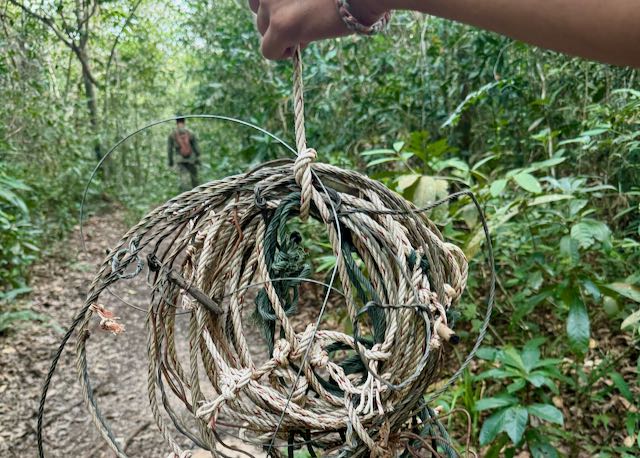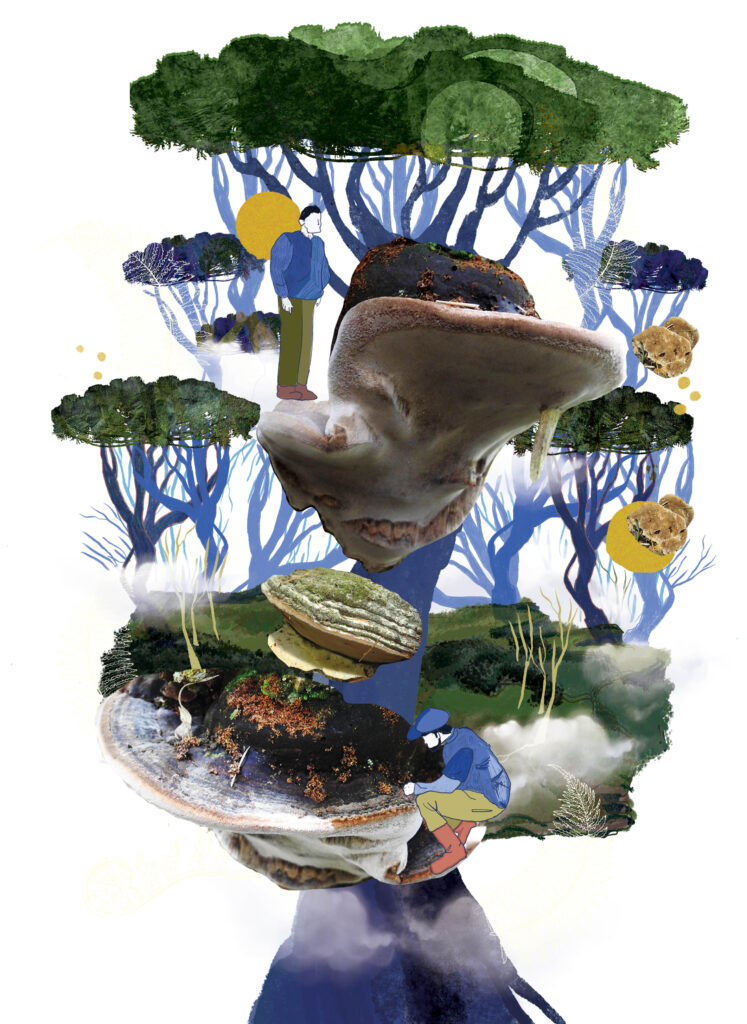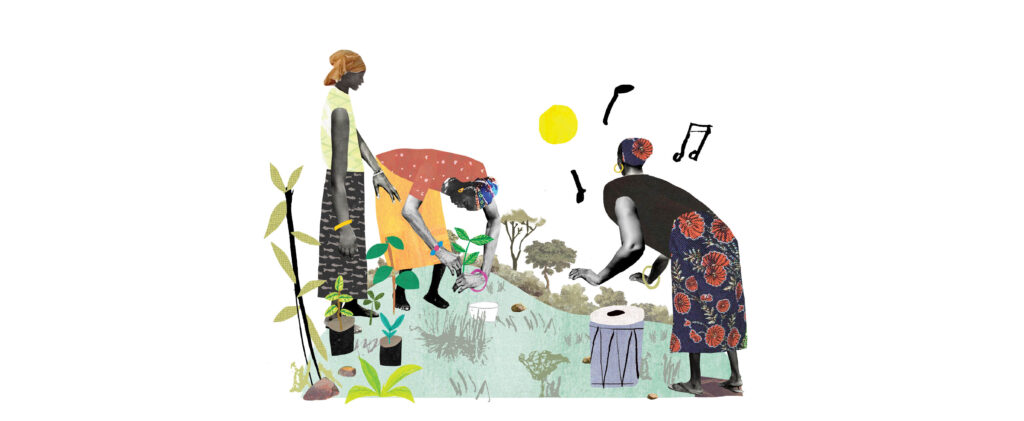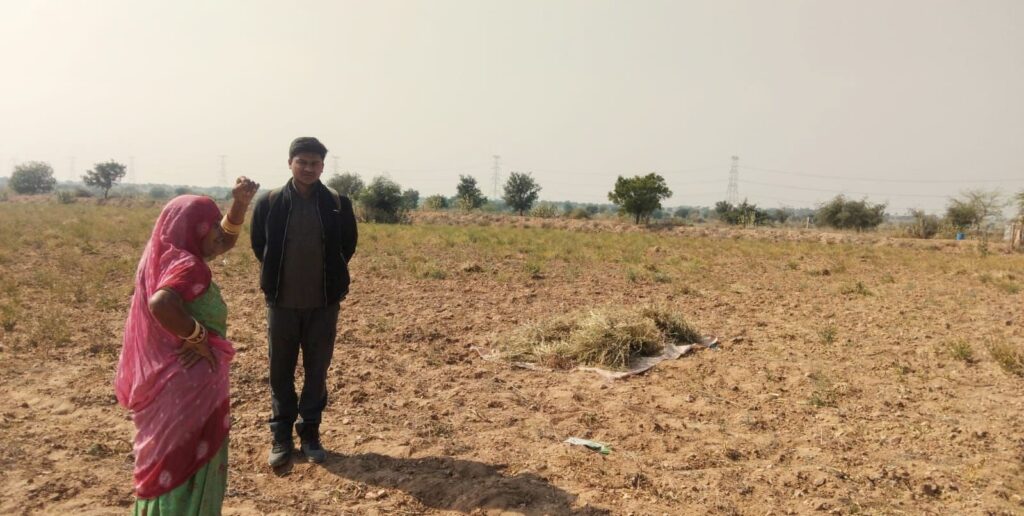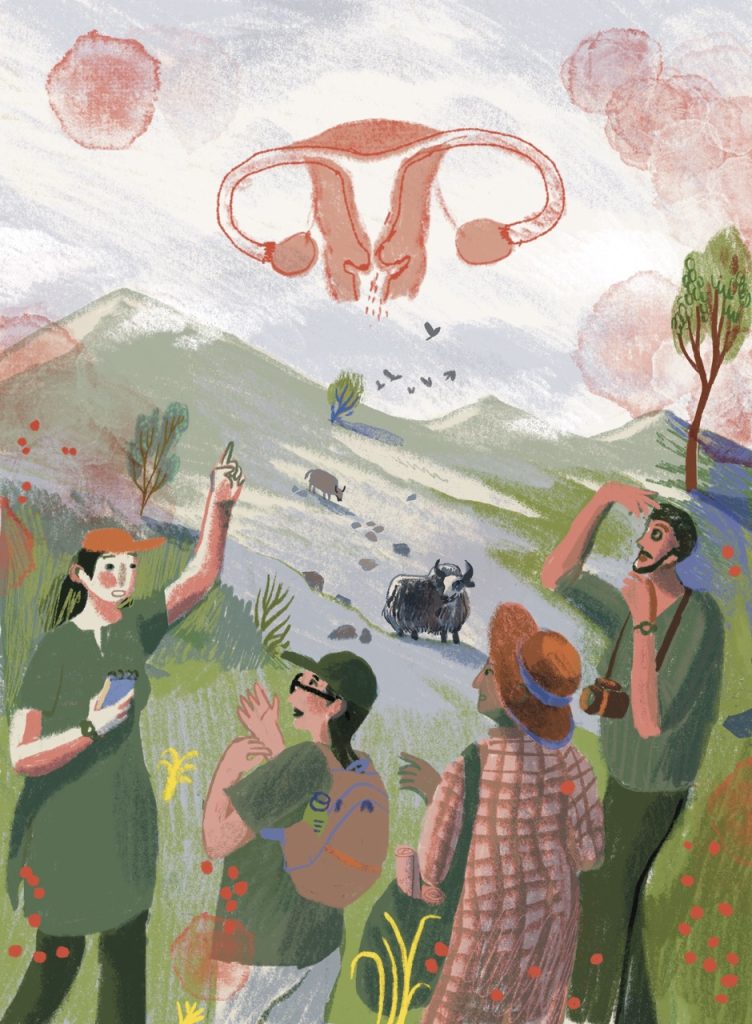Feature image: Rope and wire from several confiscated snares in Cambodia’s Cardamom Mountains (Photo credit: Sarah R. Putnam)
Celebrated hotel designer Bill Bensley loves wild places. I don’t know this from my (non-existent) stays at the Four Seasons Tented Camp in Thailand’s Golden Triangle or the equally luxurious Capella Ubud on the Indonesian island of Bali. I know because Bill and I met ten years ago, on a river in far northern Mongolia, where the accommodations are rather more rustic.
Since then, we have spent one or two weeks together every summer, camping within view of the water but without the distractions of electricity or indoor plumbing. We float 10 to 15 miles each day through red rock canyons or tawny steppes, fishing for the region’s distinctive species of trout and grayling. Although the scenery is ever-changing, the arrangement of our boat is fixed: I am always at the oars, while Bill wields either a fly rod or a sketchpad.
But this past summer, on one sunny afternoon in the drift boat, Bill’s tone turned sombre. We had been talking about his signature conservation project, Shinta Mani Wild, in Southeast Asia’s Cardamom Mountains. Since its launch in 2019, Wild has appeared on numerous world’s best hotels lists, including Time magazine’s World’s 100 Greatest Places.
Purchased at an auction of logging concessions, the site provides one of the few remaining safe corridors for forest elephants, clouded leopards, and Sunda pangolins, among many other threatened species, that migrate between two Cambodian national parks. Through a partnership with the Wildlife Alliance, teams of rangers on motorbikes patrol the hotel property—about the size of New York’s Central Park—along with a substantial buffer zone.
Over the past five years, these rangers have dismantled hundreds of criminal logging operations and confiscated nearly 14,000 wildlife snares—the favourite tool of poachers. This sounds like success until Bill admits that, despite these efforts, the jungle’s wounds continue to mount: not only from deforestation and poaching, but also outright land grabs facilitated by corrupt officials at all levels of the government.
Working for people and wildlife
Employees at the Shinta Mani Foundation—launched by Bill’s business partner, Sokoun Chanpreda, in 2004—work at the most basic levels to improve human livelihood and preserve wildlife habitats. They build wells, buy school supplies, offer microloans to would-be entrepreneurs, train subsistence farmers for more stable jobs in the tourism industry, and employ former poachers as forest rangers.
The foundation is supported by donations, as well as hotel revenue and direct action from Bill himself. He not only organises art shows and benefit galas but also contributes all income from the sale of his paintings and prints, along with a portion of the proceeds from his partnerships with silk and furniture manufacturers.
In rural Cambodia—as in the remote parts of Mongolia where I work—a little money, wisely spent, can go a long way. At Shinta Mani Wild, the foundation supports an on-site patrol station, including all the rangers’ expenses and equipment. When my wife Sarah and I finally set foot there in October, the rainy season had just ended. While we could have spent all our time happily chasing after birds—the grey-capped pygmy woodpecker, golden-fronted leafbird, and white-crested laughingthrush, among others—we were more than intrigued by the opportunity to accompany an anti-poaching ranger patrol.
Given the feudal history of game laws, the word ‘poach’ likely derives from the Middle English pocchen, which means “bagged”, or the French pocher, “to pocket”—something that any hungry peasant would immediately do with a harvested hare or partridge, given the merciless nature of medieval gamekeepers.
But the world has changed since the long-ago era when noble families owned every stag and salmon. Now, even commoners like me, the offspring of untitled immigrants, can roam the earth like royalty, seeking sustenance in what remains of the wild. Are we tourists and adventurers, the newly landed gentry, protecting fish and wildlife for our pleasure while local residents go hungry? The answer is, as you might expect, complicated.
The tragedy of the tortoise
Even in days of yore, some of the worst depredations of poaching were less about subsistence and more about the profit of organised gangs led by well-connected members of society, including minor aristocrats.
On the rivers of Mongolia where I work, regulations restrict international anglers to catch-and-release fly fishing, by permit only. When we come across unattended nets or fishing lines, we remove and destroy them, but since we lack legal authority, we do not directly confront the poachers. Instead, we call a nearby ranger, give him a location and a description, and continue downriver. In most cases, the lawbreakers arrive from the capital in luxury SUVs. They are not fishing strictly for food or income but for status and diversion.
In Cambodia, however, rural poverty is more prevalent than in sparsely populated Mongolia, and the illegal wildlife trade is more lucrative. A freshly killed pangolin, for example, might fetch more than a thousand dollars in an urban restaurant, supporting a long chain of transactions from trapper to trader to transport. Which makes Bill’s attention to the security and prosperity of humans, as well as wildlife, vitally important.
I recall my conversation with a neighbouring landowner and physician, also named Peter, who described a nearby resort that would serve wild game on request, openly flouting the law. The only good thing, he told me, was that their dishonesty knew no bounds. When unconscientious guests ordered wild boar, the management was more than happy to deceive them with domestic pork.
Peter also told me that at least three different herds of elephants live in the vicinity. When I asked how to spot them, he described being within 50 metres of a herd without catching so much as a glimpse of grey hide. “You can be so close that you smell them,” he said, “but the vegetation is too dense.”
These elephants are creatures of the rainforest. They can pass through what look like impossibly narrow openings, ascend steep slopes, and find food and water in every season, wet or dry. The elephants know how to survive here, how to share resources. They have determined when each herd will visit a certain site, according to when the fruit is ripe and the foliage newly tender. The best way to protect them is to leave them alone.
Although the forest is lush now, every streambed burbling with rainwater, there are dry seasons when the rivers recede, and poachers set fires to drive animals toward their snares. The worst thing isn’t the destruction, the waste, and the killing. It’s the animals that can’t outrun the flames, the ones that are grievously injured but not yet dead. Like tortoises.
“There is something terrible,” Peter said, shaking his head, “about a burned tortoise.”
After he fell silent, I tried to imagine the ground-level heat and smoke. Cambodian tortoises are rare and endangered, which is only a part of the tragedy. Another part is the tortoise’s slow-moving stolidity, its propensity when threatened, to withdraw into its shell, to rely on the safety of a woefully inadequate structure in such a situation.
And yet, there have been some successes. Peter has lived in this part of Cambodia for more than two decades. In the years since Shinta Mani Wild began accepting guests, illegal logging has dramatically reduced. There are no large timber sales anymore, as even politically well-connected companies fear the negative publicity that determined lawsuits can bring, and the daily patrols have discouraged smaller operators. Like elephants, the forest can thrive if left alone.
Snares everywhere
Sarah and I met Robin and Munny—the hotel’s “adventure butler” and resident naturalist, respectively—near the hotel’s main gate and made some quick introductions with the patrol. In addition to the rangers employed by the Wildlife Alliance, the group included two uniformed members, one each from the Cambodian armed forces and the Ministry of Environment. The team leader was a young Russian national named Sam, who has worked with the Wildlife Alliance for more than two years and, since arriving at this post, attuned his hearing to the particular whine of chainsaws.
What do I remember now? A small motorbike built for two, with a second set of pegs where I could rest my feet behind Robin’s and a grab bar that was not quite wide enough for my two hands to coexist side by side. The engine growling up a trail so narrow that I overlapped my hands behind me on the grab bar and ducked my head beneath the overhanging branches. Some stretches of sand where the back tyre spun, mud so deep that it sucked at the wheel hub, and bouldery outcrops where Robin and I urged the bike along with the soles of our shoes. The hillside was so steep in some places that I got off and walked.
In the jungle, every tree and vine yearned upward, their multitude of leaves gathering so much of the available light that the forest floor felt like it was in a different time zone. Overhead, in the high canopy, it was a bright afternoon, but where our feet found the trail, it was the dim twilight that encroaches after sunset, when even the shadows have shadows.
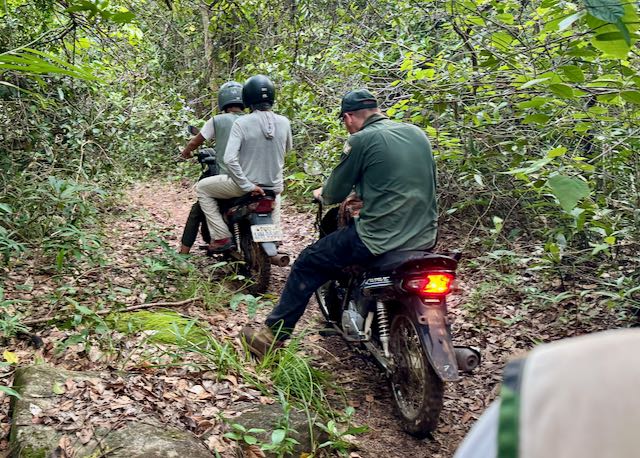
Soon after we left the bikes behind, Sam pointed toward the ground, where a game path intersected with our trail. Several long, thin branches were loosely woven into a sort of screen to funnel animals toward a noose of wire cable set around a postcard-sized piece of palm frond. The other end of the noose was sturdily knotted to a green sapling, bent almost to the ground. The paper-thin palm frond was the snare’s trigger. If an animal stepped on it, the sapling would spring upward while the noose tightened around a leg or paw.
This time, however, Robin tapped the palm frond with a stick and the snare was dismantled. One ranger removed the wire from the sapling, and another crushed a pair of forked sticks—part of the trigger mechanism—under his boot.
There’s a trick to seeing the snares, a hint of horizontal in a landscape where most things grow vertically—the incongruous arc of a branch bent back toward the earth. Over the course of the next hour, we found more than a dozen snares. Some had been freshly set, the wire still shiny, the cut edges of the palm-frond trigger clean and sharp. At least two had been successful—the wire slack now, the damp soil muddied by struggle, etched with the hoofprints of wild boar. Others, by contrast, had been subsumed by the forest, the wire dulled with rust, the bent sapling overtopped by new growth.
I asked Sam how long it had been since the patrol passed this way. He pondered for a moment. “Maybe ten days?”
We shouldered our way through vines and brambles, stepping over fallen trees and splashing through shallow rills of water edged by silt as fine as chalk dust. Whenever somebody found a snare, there was a happy shout tinged with rueful satisfaction. We were happy to find so many. And yet the fact remained: there were so many.
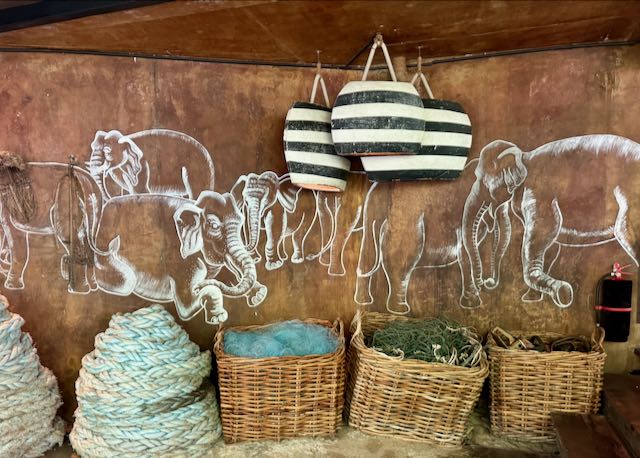
A forest of generosity
On the morning of our departure from Shinta Mani Wild, we made one final sortie for birds. Driving downhill from the hotel, we passed more than a few homes. Some structures were sturdily fashioned from concrete and rebar; others were knocked together with sheets of corrugated metal and blue plastic tarps. Munny, the naturalist, had started teaching English classes and bird identification to the nearby villagers. Many people, both children and adults, greeted him warmly.
When he first arrived here, local kids would shoot at songbirds with slingshots, sometimes for food, but mostly for lack of something else to do. This meant that—unless you stayed inside your vehicle—the birds would rarely hold still long enough for a good view.
But now we stood on the side of a muddy track, openly admiring the bulbuls, shrikes, and kingfishers feeding on flying ants. With its turquoise back and red-orange breast, one kingfisher seemed a generous entertainer, setting out from its perch to seize prey from the air, then repeatedly returning to the same dead branch. We were so close to this bird that each ant in its formidable beak was visible to the naked eye.
Although a substantial body of research links psychological benefits to the enjoyment of nature, it felt unnecessary to remind myself of those details just then. What I felt strongly was a combined sense of immersion and gratitude, neither a respite from real life nor a distraction from the human world. Yes, the rainforest can thrive if we leave it alone. But in Cambodia, as in Mongolia, people have lived in harmony with the rivers and the mountains for thousands of years. It’s only relatively recently that we have learned to wreck and ravage, to treat the planet as if it were only a stockpile and not also our home.
As it turns out, rekindling hope does not require the absence of travellers. What Sarah and I were doing was both real and human. Thanks to Bill and Munny and many, many others—every chainsaw-confiscating ranger, free-spending eco-tourist, and open-hearted foundation donor—we were loving this forest, and it was loving us back.
Further Reading
Humphrey, C. 2020. Alleged government-linked land grabs threaten Cambodia’s Cardamom Mountains. Mongabay. https://news.mongabay.com/2021/07/carving-up-the-cardamoms-conservationists-fear-massive-land-grab-in-cambodia/. Accessed on April 6, 2025.
Osborne, H., and M. Winstanley. 2006. Rural and urban poaching in Victorian England. Rural History 17: 187–212. https://doi.org/10.1017/S0956793306001877.
